From tales of cinematic faith to political fervour, a true-blue local delves into the often-ignored pulse of the city — North Madras.

Agastya Theatre, Tondiarpet. (Rahul Somanathan)
What you’re about to read today isn’t the usual narrative you’d associate with Madras and its culture.
It’s a tale about its people, their intense passion, and the myriad emotions that course through the veins of Madras’ inhabitants every moment.
Madras isn’t a mere mosaic of thoroughfares, parks, and structures — a perspective predominantly portrayed by Savarna or upper-class writers and historians, who have traditionally dominated the discourse on Chennai; it’s a reflection of its people.
So, from the perspective of a Madras native hailing from the marginalised working-class majority, there arises the need for someone to finally narrate our side of the story, don’t you think?
The narratives of Madras encompass its history, authentic culture — both its celebratory moments and setbacks — and most significantly, its inhabitants who have remained inadequately portrayed in mainstream media.
Tamil literary luminaries like D Jayakanthan and others have explored the people’s psyche, but they might have missed capturing the genuine essence.
If I, a native of Madras, were to guide you through the realm of the city and its theatres, I’d open a chapter from my heart and urge you to delve into the moments ablaze with fervour.
In 2016, my writing journey began and if there’s a constant thread woven through my words, it’s the world of cinema. Cinema is an ardour that’s ensnared my heart.
It’s a sentiment that resonates across India, and the people of Tamil Nadu are no exception.
Yet, in the heart of Madras, two passions reigned supreme: Politics and cinema. These were the sources where their emotions flowed without restraint. The labouring masses, often marginalised, bore the weight of life’s struggles.
For them, solace, indulgence, and celebration sprung from two wellsprings: Religion and cinema. Among these, cinema carved a distinctive niche, ruling over their hearts with a dominion even mightier than religion.
Cinema became their faith.
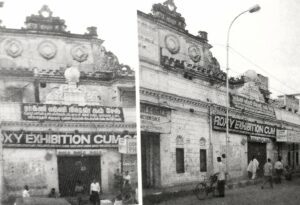
Roxy Theatre. (K Kalpana and Frank Schiffer)
Tamil Nadu has witnessed several chief ministers emerge from the film industry. The Tamil populace adores its stars to such an extent that after the release of just a few blockbuster films, an actor becomes a potential contender for the chief minister’s seat. They christen them Nalaiya Muthalvar (future chief minister).
When I assert that cinema is their religion, it’s no hyperbole. The vintage cinema halls in North Madras often bore names of Hindu deities.
Vaani, Vasanthi, Mahalakshmi, Bhuvaneshwari, Saraswathi, Abirami, Bala Abirami, Uma, Padmanaba, Nataraja, Balaji, Brindha, Saravana, Naadhamuni, Motcham, Mekala, and more were endowed with names steeped in devotion.
North Madras was a haven for theatres, every nook hosting a silver screen for the moviegoers. Prabhat, Crown, Roxy, Maharani, Sayani, Thamizh Nadu, Ashok, and others illuminated this corner of the city.
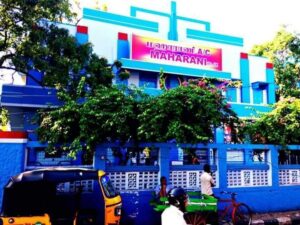
Maharani Theatre, Old Washermanpet. (NorthMadrasPage-Saranraj Kumar)
Yet, the tales are about more than just theatres. Amid the working class and the caste-oppressed, life was a tapestry of adversity, woven with threads of oppression from both society and the state.
Most grappled with poverty, their living conditions painted with hardship. Life remained, and remains, a formidable challenge. The trifecta of caste, class, and power establishments perpetually shadowed them.
But during these hardships, they found space to celebrate life. Amid toil, they embraced relaxation.
In the ordinary, they unearthed extraordinary meanings.
Their hearts remained open to the enchantment and marvels that every second unfurled. And cinema held the key to that enchantment.
It offered a portal to another world, a respite from worries for two-and-a-half hours. A monumental escape.
In sports, music, in food, they found joy, but cinema transported them to another realm. With open eyes and ears in a dim hall, they discovered “the light”.
They sang alongside heroes and danced with heroines. It was crafted exclusively for them.
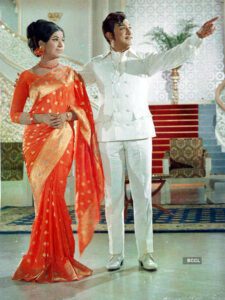
Actors Vanisri and Sivaji Ganesan in a still from ‘Vasanth Maligai’ (1972). (Supplied)
When MG Ramachandran (MGR) consoled a labourer through song, the audience felt his embrace. When the same MGR lashed a feudal landlord on screen, their cheers erupted like a volcano. They revelled in the catharsis as if they had avenged a wrong. In those moments, they became MGR.
Women embodied Saroja Devi, Vanisri, and more. They mimicked their style and mannerisms.
My maternal grandmother, fondly called Ammachi, was a devoted Vanisri aficionado; she emulated her — with the hair bun and georgette sarees — for over a decade.
My Thaatha (grandfather), an ardent Sivaji fan, would sit in the veranda of our small home in our Cheri on a chair, cross-legged, a glass of McDowell brandy in hand, reciting Sivaji Ganesan’s iconic dialogues from movies like Vasantha Maligai (1972), Vietnam Veedu (1970), Thanga Pathakkam (1974), and Gauravam (1973).
Sivaji validated my Thaatha’s existence. His very presence, a glass of spirits in hand, extended solace to the liquor-loving working-class men of Madras. After a gruelling day, they’d raise a toast to Sivaji.
In a parallel vein, Gemini Ganesan’s Nilave Ennidam Nerungathe from Ramu (1968) convinced my lovelorn periyappa (maternal uncle) to embrace a solitary life.
Even today, in North Madras, MGR’s image is venerated by the thousands.
Rickshaws, street corners, and walls are adorned with his smiling visage, often in a dashing suit. It’s not merely his politics; their ardour for him is rooted primarily in his thespian prowess.
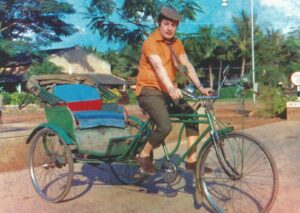
MGR in Rickshawkaran. (1971). (Supplied)
At one point, the releases of MGR and Sivaji’s films on the same festive day in the same theatre led to clashes among their admirers, sparking physical altercations.
The rivalry was fierce. Skirmishes broke out between localities in North Madras over their beloved stars. Puliyanthope versus Otteri, Choolai versus Kosapet, and more.
However, not all could afford the tickets. Many settled for oli chithiram, audio films broadcasted on the radio. My mother, a cinema enthusiast, would watch the movies in theatres and then gather the women from our street to narrate the entire film scene by scene once she returned.
Songs and fight sequences were excluded; their magic couldn’t be effectively recreated. The women would sit around her, absorbed in their daily chores, listening to her vivid descriptions of the heroine’s attire and makeup.
We weren’t well-off, but because my mother had a passion for movies, she would cut corners elsewhere to afford the luxury of watching them.
My mother rarely took me to the cinema with her, but my first vivid memory of a theatre experience stems from Karakattakkaran (1989).
I was perhaps six years old. Pongal and Deepavali were paramount in North Madras, marked by new movie releases.
Pongal was celebrated lavishly for three days and cinema was the favoured amusement. Most of those days were spent watching movies, with some individuals even catching two shows in a single day.
These festivals brought a romantic atmosphere, with single men and women thronging the theatres, hoping to encounter someone special.
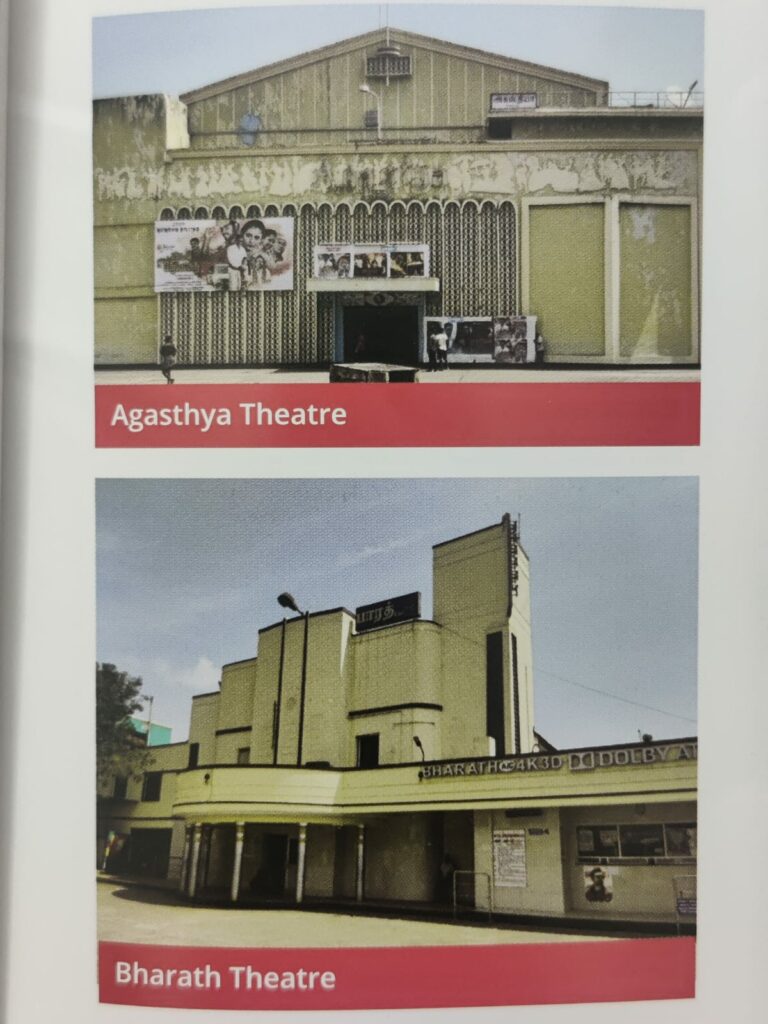
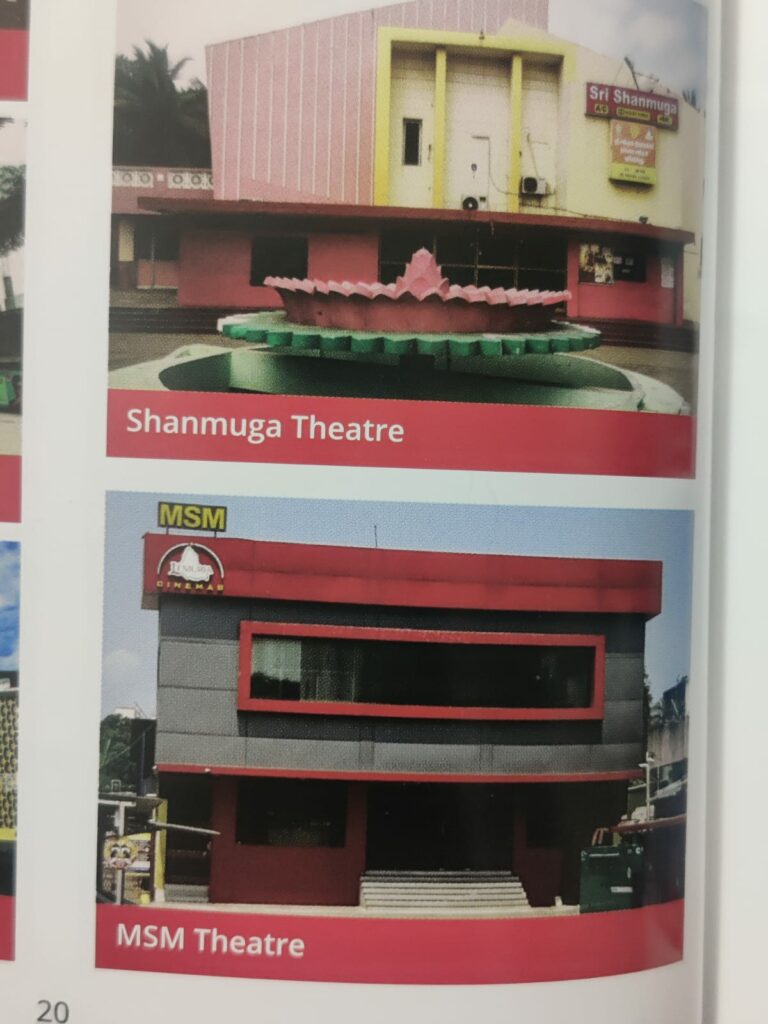
Most men would buy tickets and send them through intermediaries to their paramours. Women would conceal the colourful tickets within their blouses, pretending to accompany us children to the movies.
“I would have joined if it were a Kamal Hassan movie. Why would anyone watch a Ramarajan movie on the first day?” my mom once quipped, but her intentions hardly mattered amid the frenzy.
The women would scramble to get ready, hurriedly donning their best attire before heading out in haste. They would wear freshly tailored half-sarees, style their hair into twin plaits, adorn them with strings of December flowers, and apply “rose powder” to their faces.
However, in the current times, we behave as if we are granddaughters of Mountbatten when we witness women donning flowers and sarees within the theatre premises. Back then, the customary attire for moviegoers comprised elegant sarees or half sarees, complete with floral adornments in their hair.
With their lunches consumed swiftly, a pack of murukku and udachakadalai urundai purchased from a nearby shop and stashed in a small woven bag, we would head to the matinee show.
Our journey would take us along Perambur Barracks Road, finally leading us to the theatre. When the gaze of these women met their waiting lovers outside the cinema, shy smiles were exchanged, and their eyes averted modestly.
Ah, I nearly forgot to describe the theatre itself. We watched the movie at the Mahalakshmi Talkies in Pattalam.
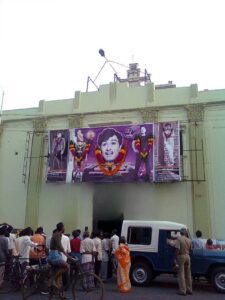
Mahalakshmi Talkies. (Srimgr.com)
Erected in the 1930s, this cinema hall was synonymous with screening MGR films. Despite its age, it remained vibrant.
Banana trees adorned the entrance, bedecked with festive thoranams, while the walls were plastered with movie posters. The theatre was brimming with life. Mothers with children clinging to their hips, toothless elders, and lungi-clad men puffing on beedis and cigarettes; the theatre’s interior was akin to a grand hall, complete with sweeping maroon velvet curtains and a commodious balcony.
We would wade through the crowd, an amalgamation of fragrances lingering in the air — tobacco, smoke, jasmine, roses, Gokul sandalwood powder, alcohol, and sweat.
Finding our seats in the front rows, some even on the floor, by this time, Ilayaraaja’s voice would be serenading the opening song:
Pattale puthi sonnaar
Pattale bakthi sonnaar
Pattukku naan paadupatten
Andha paattukkal pala vidham than
Applause and whistles erupted, with fervent shouts of “Thalaiva!” “Isaignani!!” resounding through the hall.
Mahalakshmi theatre was once favoured by patrons of spirits. Many working-class folks enjoyed their movies with alcohol, a custom reminiscent of British tradition.
Despite their heightened enthusiasm, they rarely disrupted the experience for others.
Truth be told, the movie was exceptionally crafted. It enthralled, it bewitched, with its exquisite melodies and comedic elements.
Every word uttered by Goundamani and Senthil was a cue for uproarious laughter. I could hear an elderly lady seated behind us chiding Goundamani for kicking Senthil.
Some spectators vociferously berated Santhana Bharathi, who portrayed the main antagonist. Completely absorbed, they were wholly invested in the movie.
During the intermission, we ventured to the restroom, our steps accompanied by a hint of trepidation; tales abounded that the theatre bathrooms were haunted.
As a child, I was perpetually puzzled as to why ghosts exhibited such an affinity for “bathrooms”. What was the intrigue with bathrooms? Why bathrooms of all places? The thought was perplexing.
The climax drew near, and as Santhana Bharathi faced a beating at the hands of Ramarajan, the climax song Mariyamma, Mariyamma resounded resplendently.
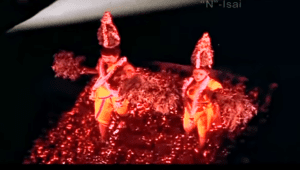
‘Mariyamma Mariyamma’ from ‘Karakattakaran’ (1989). (Supplied)
The scene where Ramarajan and Kanaga braved the fire walk (a Bahujan ritual) was imminent. Then, a gust of wind swept behind me, accompanied by a hissing sound.
I was startled and turned around to witness the elderly lady seated behind me rising, seemingly inhabited by some divine entity. She began to dance like Kali, an image that sent shivers down my spine.
I swiftly sought refuge in the embrace of an elder sister for solace. Gradually, other women joined her, seemingly possessed by deities, swaying and twirling. Most of them closed their eyes, writhing and hissing.
Envision this — an entire cinema hall, shrouded in darkness, resonating with Ilayaraaja’s music and women seemingly possessed.
It’s a sight that defies description through mere words. Amid the tumult, three poosaris (priests) entered the hall, shirtless and draped in saffron lungis, bearing plates laden with kumkum and turmeric powder.
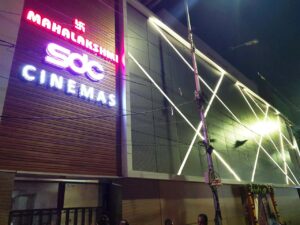
Mahalakshmi Theatre, now renovated by SDC Cinemas. (Supplied)
Neem branches were in their grasp, employed to pacify the frenzied dancers. Camphor was lit and placed inside the mouths of these women to “exorcise” them.
Yet, even during the turmoil, a few “liquor enthusiasts” slumbered tranquilly in their seats, while others mimicked the possessed women, their hands contorting and swaying through the air.
The scene was an odd combination of eerie and comical.
Meanwhile, the elder sisters exchanged affectionate glances with their companions, love transcending the chaos.
The movie culminated, in an experience that etched itself into my core, a memory as vivid now as it was 34 years ago. What a remarkable day it was!
But, you ought to know that possession within theatres seems exclusive to Tamilians.
It’s an intriguing phenomenon, and there’s an inherent innocence to it. If cinema can kindle love, it can also evoke possession, can’t it? After all, isn’t it all a form of magic?
The landscape may have shifted now. Around 90 per cent of theatres in North Madras have been sold, supplanted by apartment complexes bearing signs like “only Jain,” and “only vegetarian.”
Yet, Saravana Balaji Theatre in Otteri, inaugurated by MGR, remains a testament to the owner’s benevolence and his commitment to serving the marginalised workers who faithfully gather to watch an MGR movie every week.
A lot of youngsters from today’s generation would not be able to relate with single screen theatres, where there was no AC and instead fans were placed across the cinema hall. A lot of folks used to carry their own cooked food inside. A glimpse of Saravanna Theatre, Chennai. pic.twitter.com/Oji2IWAEMd
— Filmy Guftgu (@filmyguftgu) August 25, 2020
Mahalakshmi, poised to commemorate a century of existence, now rests under the aegis of SDC Cinemas. They’ve undertaken renovations, ensuring its survival.
I noticed an MGR movie poster there just last week, and I believe that MGR, along with the theatre’s proprietors, continues to captivate and animate the audience.
I can’t confirm whether women still succumb to possession and dance during movies, but one thing is certain — somewhere in North Madras, an elderly local sporting a lungi is watching a movie, his feet propped up on an empty seat, applauding for MGR, shouting “Thalaiva!”.
(Shalin Maria Lawrence is an intersectional feminist, author, and Dalit rights activist)
(‘Madras 384’ is a curated compilation of articles that joyfully celebrate the captivating journey of Chennai, also known as Madras, while inspiring meaningful discussions.)

May 05, 2024

May 05, 2024

May 04, 2024

May 04, 2024

May 03, 2024

May 01, 2024